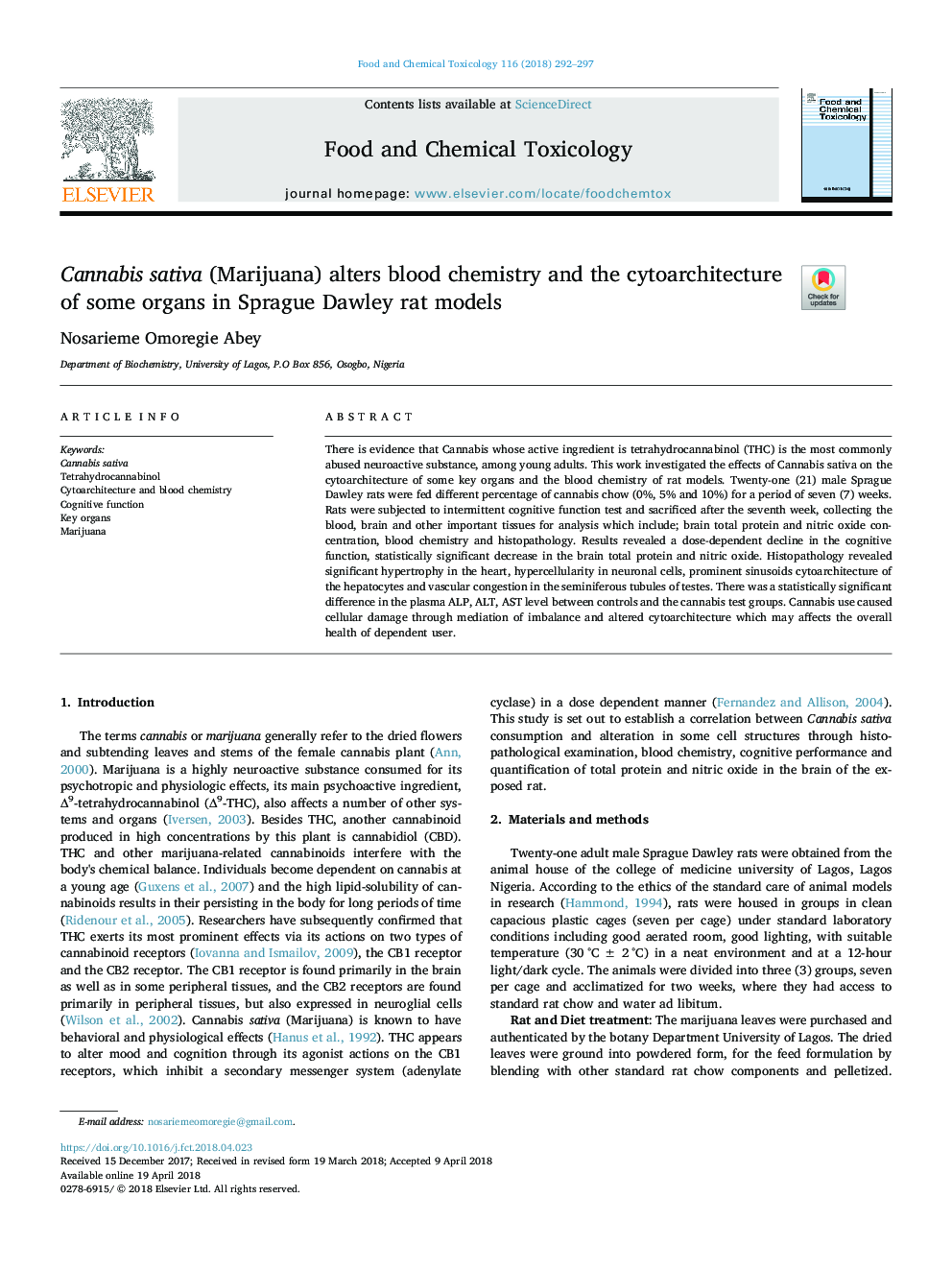| Article ID | Journal | Published Year | Pages | File Type |
|---|---|---|---|---|
| 8547312 | Food and Chemical Toxicology | 2018 | 6 Pages |
Abstract
There is evidence that Cannabis whose active ingredient is tetrahydrocannabinol (THC) is the most commonly abused neuroactive substance, among young adults. This work investigated the effects of Cannabis sativa on the cytoarchitecture of some key organs and the blood chemistry of rat models. Twenty-one (21) male Sprague Dawley rats were fed different percentage of cannabis chow (0%, 5% and 10%) for a period of seven (7) weeks. Rats were subjected to intermittent cognitive function test and sacrificed after the seventh week, collecting the blood, brain and other important tissues for analysis which include; brain total protein and nitric oxide concentration, blood chemistry and histopathology. Results revealed a dose-dependent decline in the cognitive function, statistically significant decrease in the brain total protein and nitric oxide. Histopathology revealed significant hypertrophy in the heart, hypercellularity in neuronal cells, prominent sinusoids cytoarchitecture of the hepatocytes and vascular congestion in the seminiferous tubules of testes. There was a statistically significant difference in the plasma ALP, ALT, AST level between controls and the cannabis test groups. Cannabis use caused cellular damage through mediation of imbalance and altered cytoarchitecture which may affects the overall health of dependent user.
Related Topics
Life Sciences
Agricultural and Biological Sciences
Food Science
Authors
Nosarieme Omoregie Abey,
